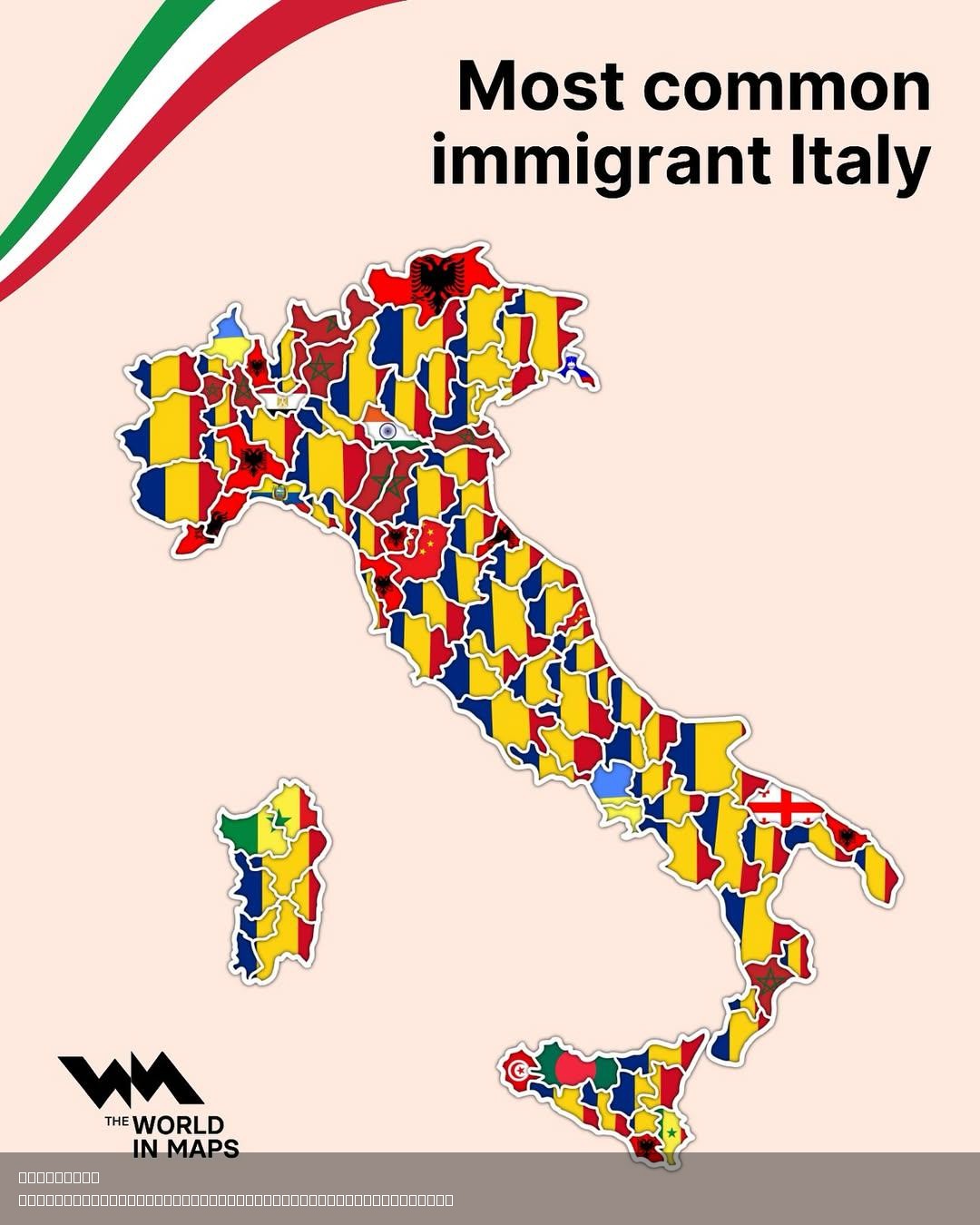Italy's Most Common Immigrant Groups by Province Map


Alex Cartwright
Senior Cartographer & GIS Specialist
Alex Cartwright is a renowned cartographer and geographic information systems specialist with over 15 years of experience in spatial analysis and data...
Geographic Analysis
What This Map Shows
The map titled "Italy's Most Common Immigrant Groups by Province" provides a detailed visualization of the diverse tapestry of immigrant populations across Italy. Each province is color-coded to reflect the predominant immigrant group residing there, illustrating not just the numbers but also the cultural influences that shape various regions of the country. From the bustling streets of Milan to the scenic coastlines of Sicily, this map offers a window into the multicultural fabric that enriches Italian society.
Deep Dive into Immigration Patterns in Italy
Italy has a long history of immigration, influenced by various waves of migration from different parts of the world. The most significant immigrant groups in Italy are primarily from countries such as Romania, Albania, Morocco, and China. According to recent statistics, over 5 million immigrants reside in Italy, making up about 8% of the total population. This significant demographic shift has transformed many urban and rural areas, contributing to the economic and cultural landscape of the nation.
Interestingly, Romanian immigrants represent the largest group, particularly concentrated in Northern Italy. Provinces such as Turin and Milan have seen a substantial influx of Romanian nationals, who have often sought work in construction, agriculture, and service industries. This has led to a vibrant community that not only contributes economically but also integrates culturally through festivals, cuisine, and traditions.
In contrast, the Southern provinces display a different trend. For instance, in Sicily, the most common immigrant group is from North Africa, especially from Tunisia and Morocco. This pattern can be attributed to geographical proximity and historical ties. Many North Africans seek opportunities in the fishing and agricultural sectors, which have been pivotal for the local economy.
The Chinese community, while smaller in number, has also made its mark in urban centers like Milan and Rome. Here, they have established a thriving business presence, particularly in retail and textiles, significantly influencing the local economy and lifestyle.
The immigration landscape is dynamic, with shifts occurring based on economic conditions, legislative changes, and global events. For instance, the recent conflicts in the Middle East and Africa have led to an increase in asylum seekers, particularly from Syria and Eritrea. This influx highlights the importance of understanding immigration not just as a static phenomenon but as a response to global challenges.
Regional Analysis
Diving deeper into the provinces, we see distinct immigration patterns emerge. In the Northwest, particularly in Lombardy, the concentration of Romanian immigrants is evident. This region has become an economic hub, attracting many seeking employment opportunities. The province of Milan has one of the highest immigrant populations, leading to a multicultural environment that is rich in diversity.
Conversely, in the Southern regions, the immigration patterns show a significant presence of North African communities. For example, in provinces like Trapani and Agrigento in Sicily, the high number of Tunisian and Moroccan immigrants reflects historical migration routes and socio-economic factors that draw people to these areas.
Interestingly, the central regions, such as Lazio, where Rome is located, showcase a mix of immigrant groups, including those from South America and Eastern Europe. This diversity contributes to a vibrant social landscape, characterized by international cuisine, cultural festivals, and community events that celebrate various heritages.
Significance and Impact
Understanding the distribution of immigrant groups in Italy is crucial for several reasons. Firstly, it sheds light on how immigration shapes local economies, labor markets, and social structures. As Italy grapples with demographic challenges, including an aging population, immigrants play a vital role in sustaining the workforce and contributing to social security systems.
Moreover, the cultural exchange brought about by these immigrant communities enriches Italian society. From culinary innovations to artistic collaborations, the influence of immigrants is evident in everyday life. However, the topic also raises questions about integration, social cohesion, and the challenges that come with multiculturalism.
As Italy continues to evolve, the future of its immigration landscape will depend on various factors, including European Union policies, economic conditions, and global migration trends. Have you noticed how these immigrant communities have transformed cities into hubs of cultural exchange? The ongoing dialogue about immigration will undoubtedly shape Italy's identity for generations to come.
Visualization Details
- Published
- August 7, 2025
- Views
- 222
Comments
Loading comments...